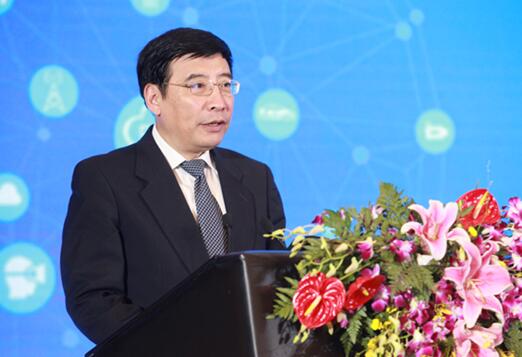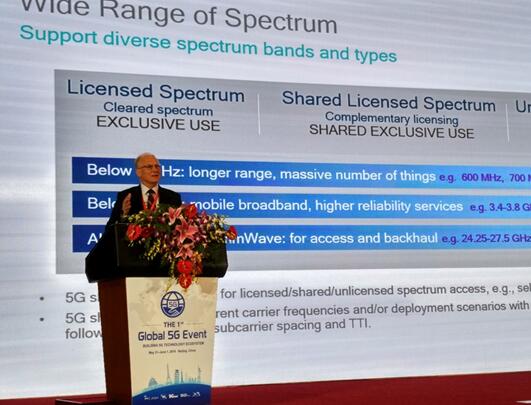On May 31st, the first global 5G conference was held in Beijing. The conference was co-sponsored by five 5G promotion organizations from China, the European Union, the United States, Japan, and South Korea. This conference is also the first global 5G conference jointly hosted by China, Europe, Japan and South Korea 5G organization in October 2015 after signing a multi-party memorandum. The industry believes that this meeting is of great significance to promote global unified standards and industrial development, which means that the conference is about the future of mobile communications.
Advance to the global 5G standard
From the initial 1G/2G voice network to the evolution of 3G/4G LTE high-speed data networks, mobile communications has promoted the development of mobile Internet and led the era of smart phones. Nowadays, communication technology is moving towards 5G. A new mobile network is about to emerge. It will connect new industries, spawn new services, and bring a new user experience to meet the growing demand for connectivity from now to the future.
Indeed, the present and the future will be the era of big connections. According to analysis company data, the number of connected terminals will reach 25 billion to 50 billion by 2020. From 2010 to 2020, global mobile data traffic will increase 1000 times. The industry generally believes that the future 5G network will provide an integrated distributed platform for computing, storage, network resources and connectivity in the “big connection eraâ€. This unified connectivity architecture provides higher peak rates, latency down to milliseconds, and lower cost and higher energy efficiency, which will provide the most powerful support for the era of connectivity.
Miao Wei, Minister of the Ministry of Industry and Information Technology, said that 5G will greatly enhance the mobile Internet user service experience, and the massive demand for networked applications, 5G will directly promote the major leap in the mobile communications industry, drive the rapid development of chips and software, and through industrial and medical Such deep integration of the industry has spawned new formats such as the industrial Internet and the Internet of Vehicles.

(Ministry of the Ministry of Industry and Information Technology gave a speech. Image source: Ministry of Industry and Information Technology website)
Miao Wei also said that China should establish a broad and in-depth exchange and cooperation mechanism, and actively promote the formation of a globally unified 5G international standard under the framework of international standards organizations such as the International Telecommunication Union and 3GPP. Cao Shumin, dean of the China Institute of Information and Communications Technology, also said that the current global unified 5G standard is a development goal, which will avoid fragmentation of the 5G standard.
Regarding global standards, Edward TIedemann, senior vice president of Qualcomm R&D, who was invited to attend the conference, said that Qualcomm is working with the industry to create a global interoperable 5G standard and specification. He believes that the design optimization waveform and multiple access of 5G technology will be very dependent on the OFDM technology family that adapts to the new extreme requirements.

(Edward TIedemann, Senior Vice President of R&D, Qualcomm, explains the latest developments in 5G)
Previous public information showed that the research project (Study Item, SI) RP-160671 was adopted by 3GPP in Sweden, and the project defined the goal of a new 5G wireless access technology. This unified OFDM-based air interface has scalability to meet extreme changes. Experts believe that this is an important milestone for 3GPP. This 5G research project is expected to become the Release 5 work item (Work Item, WI) defining the first 5G standard, which is expected to be completed in the second half of 2018.
Observe Qualcomm's latest technology, which mainly covers the following aspects: First, design a unified air interface based on optimized OFDM waveform, and multiple access with flexible framework, which can be extended from low frequency band to millimeter wave, extended from macro station deployment To local hotspots and support for licensed, unlicensed and shared licensed bands from the beginning of development; second, its new 5G multi-connection technology supports concurrent connections and aggregation across 5G, 4G LTE and Wi-Fi technologies, with multiple addresses The access to the 5G core network ensures that mobile operators can continue to benefit from the current investment in construction in the future; third, Qualcomm defines a flexible network architecture that enables 5G network operators and OTT service providers to build quickly and efficiently. Customized services to meet the highly variable 5G use cases, extending from low-cost hotspots to wide-area mobile deployments.
The key to 5G technology - millimeter wave
During the conference, Edward TIedemann, senior vice president of Qualcomm R&D, also highlighted a number of Qualcomm source power technologies that meet 5G requirements and support 5G services. He said that millimeter wave (mmWave) is the key to 5G technology to achieve the ultimate mobile broadband experience.
The industry believes that in the high frequency range (such as 28 GHz), it is millimeter wave. Not only does it provide enough bandwidth to support multi-gigabit per second (Gbps) data rates, but it also offers the opportunity to take advantage of extremely dense spatial multiplexing to increase capacity. At the moment, millimeter-wave frequencies have been used in applications such as indoor high-resolution video transmission over 802.11ad WiFi operating in the 60 GHz spectrum. At the product level, Qualcomm 802.11ad products are leading the development of multi-band Wi-Fi ecosystems. Qualcomm introduces a physical layer of up to 4.6 Gbps and introduces a bandwidth-rich 60 GHz spectrum into Wi-Fi. 802.11ad is one of the data-requiring tools for the proliferation of home, enterprise and carrier networks. Some of the 11ad use cases include no-latency docking and screen mirroring, 4K streaming for multi-terminal, near-instant multimedia access, and fast upload and download.
In addition, Qualcomm also demonstrated the TDD synchronization system operating in the 28 GHz band, demonstrating the smart beamforming and beam tracking techniques. With this technology, a relatively stable signal-to-noise ratio (SNR) can be obtained even if the device is moved and the RF channel conditions change. This demonstration realizes the application of millimeter wave in mobile broadband and is regarded as a big step in the millimeter wave "mobilization".
Technological evolution in the pre-5G era
Rome is not built in one day, and 5G is not the only concern in the wireless industry. Currently, the industry is continuing to fully exploit the potential of 4G LTE through LTE Advanced Pro – driving LTE to the 5G vision. The new Release 14 work project adopted by 3GPP includes LTE broadcast enhancements for digital TV broadcasting, as well as full-dimension MIMO (FD MIMO). These new work projects will join the already enriched LTE Advanced Pro roadmap, including the expansion of LTE to unlicensed spectrum (LAA/eLAA), LTE for Internet of Things (eMTC, NB-IOT), LTE vehicles and Internet of Everything (LTE V2X) and more.
In terms of chip products, Qualcomm is the first to bring 4G into the Gigabit era. Its newly released Opteron X16 LTE modem is the first commercial LTE-Advanced Pro modem and the first Gigabit LTE modem in the mobile industry. Up to 1Gbps of LTE Category 16 download speed like fiber; it also delivers up to 150Mbps upstream speed by supporting up to 2x20MHz uplink carrier aggregation and 64-QAM. The industry generally believes that the Xiaolong X16 not only blurs the boundaries between wired and wireless broadband, but also represents an important step towards 5G.
From a technical perspective, LTE-Advanced Pro not only greatly enhances the performance and efficiency of mobile broadband, but also extends LTE to new areas such as unlicensed spectrum and end-to-end communication. In addition, LTE-Advanced Pro will introduce new technologies to expand the boundaries of the LTE space, supporting the rapid development of connected cars, smart cities, smart homes and wearable devices, connecting the world around us. This includes supporting new LTE service types and opening up new opportunities for the entire mobile ecosystem.
Led Ball String Light
Best decoration for Christmas tree, outdoor trees, porch, around the patio table umbrella, Xmas, wedding, birthday party, outside, indoor.
Each string lights has a socket that can be connected to another string lights for infinite extension .Fairy lights with soft wire is very flexible to hang in kids bedroom,tent,etc.
Waterproof IP67, Non-friable ,not overheat, high voltage protection, cool to the touch.
The bulbs are each one color a piece, which I didn't know when I bought this, but I'm alright with that. They're cute, the frosted white globe over the LED bulb is nice. The colors, in order, are Blue, Orange (or dark yellow), Green, and Red, like you might find on traditional multicolor lights. The picture looks like there's purple or teal lights, but that's not true. The remote came with a battery, which was cool. The length stretches over my entire porch, exactly, which was a great surprise.
Led Ball String Light
Led String Lights Outdoor,Cotton Ball String Lights,Cotton Ball Fairy Lights,Cotton Ball Fairy Lights
XINGYONG XMAS OPTICAL (DONGGUAN ) CO., LTD , https://www.xingyongxmas.com
